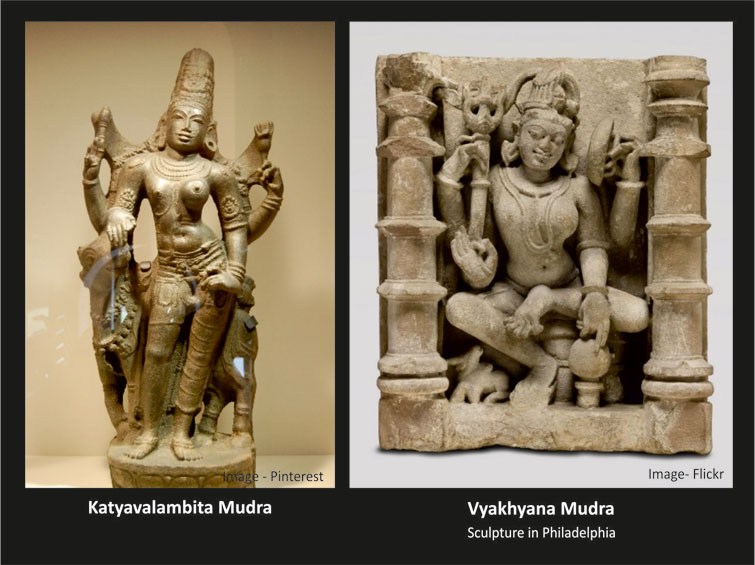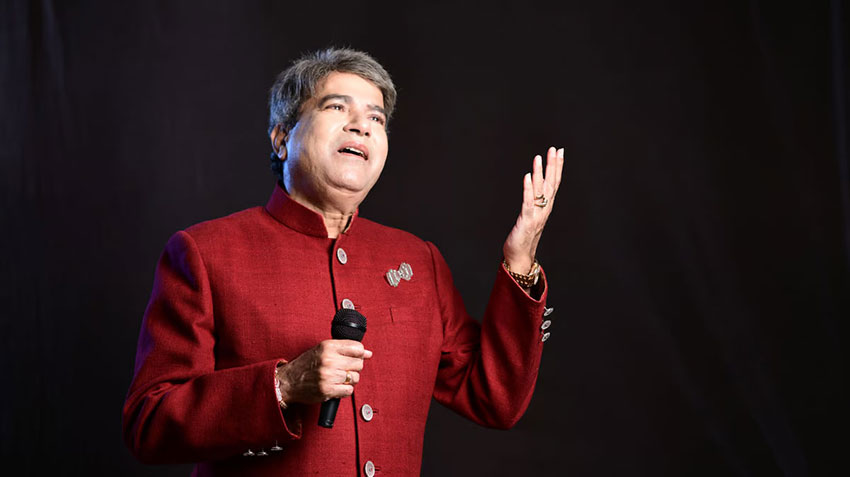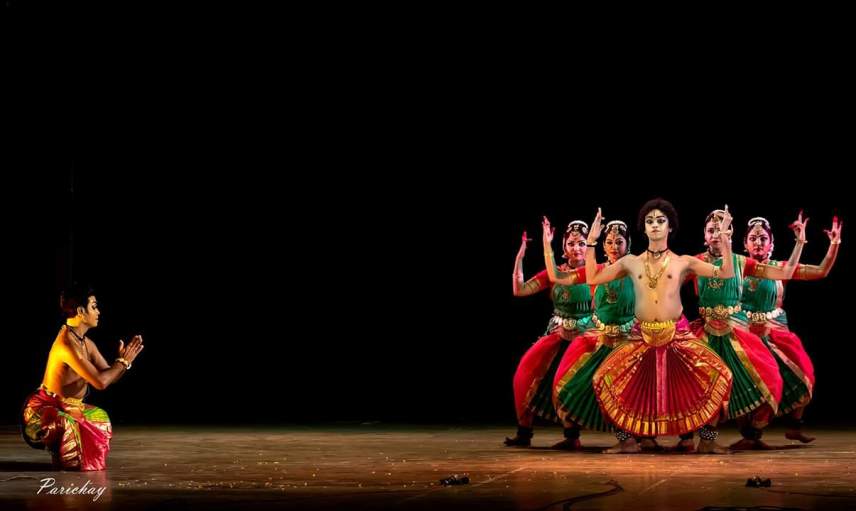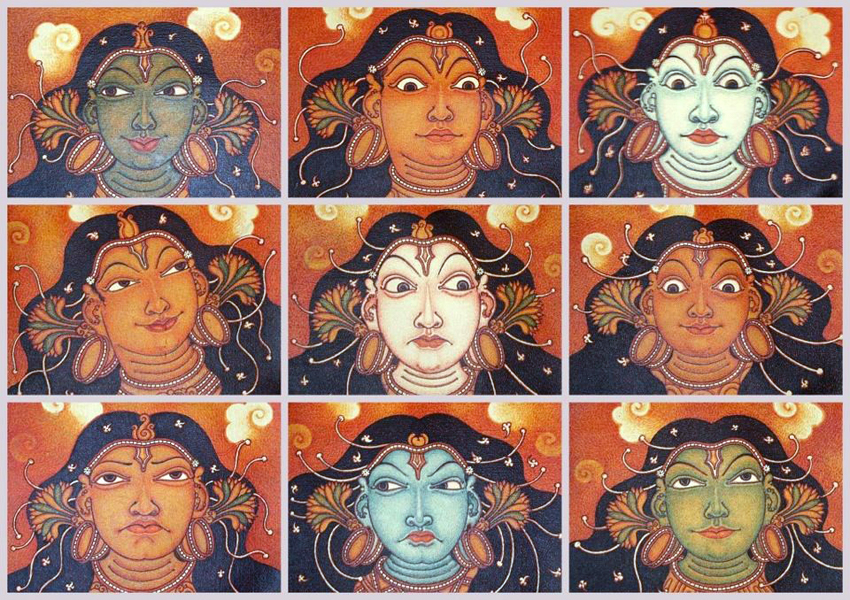Ardhanari Nateshwar, the androgynous form of Lord Shiva has always been an inspiration to all art forms, especially classical Dance. नमः शिवायै च नमः शिवाय … the famous Ardhanarinateshwar stotra is frequently performed, wherein the dancer can show the Masculine and Feminine aspects of his/her dance movements at the same time. However, this androgynous form is rarely perceived with the concept and philosophy behind. Some western critics even portray this form in an incorrect way as “God that is half-woman”.
This article aims at:
- Exploring the philosophy behind this form so that this form can be depicted with a deeper sense.
- Exploring the other Ardha-Nari forms such as Ardha-Nari Ganesh, Ardha-Nari Krishna. These forms are yet not explored by classical dancer and a study of these forms will certainly add to the content of classical dance.
Ardhanarishwar- The Symbol of Procreation
वागर्थाविव संपृक्तौ वागर्थप्रतिपत्तये।
जगतः पितरौ वंदे पार्वती-परमेश्वरौ॥
Revered poet Kalidas articulates Shiv and Parvati with a fitting analogy of ‘word’ and ‘meaning’. He indicates the ‘duality’ in the form of Shiv and Parvati as well as Word and Meaning, the duality that has ‘oneness’ in one sense and ‘contrast’ in other.
The duality in the nature has always fascinated human mind, when the two entities exist separately and within each other at the same time. A human being is not a pure unisexual organism. Each human organism bears the potentiality of both male and female sex. Concept of duality is seen since the most ancient works of knowledge of the human beings. Dyava-Prithivi, the ensemble of earth and sky is considered as a deity in Veda’s. Prakriti and Purusha is the pair of cosmic forces enveloped together.
Ancient literature explains the process of creation stating the instinct of soul ‘एकोऽहं बहु स्याम।’ (I am one and will multiply/reproduce). The tremendous urge to unite with something else and then to multiply through this union is the testimonial of life and is the life-force of any creation. Thus, the duality and its union lead to creation and is essential for the same. Hiranyagarbha Sukta also depicts the duality of Life and Matter: Prana and Bhuta which is necessary for the process of creation. The imagery of Ardhanarishwara is the representation of this unending Cosmic Copulation.
Ardhanarishwar (Ardha-Nari-Ishwar) or Ardhanarinateshwar (Ardha-nari-nateshwar) is the form in which the Shiva and Parvati appear together as one body- half male and half female. This is one of the 64 manifestations of Lord Shiva. This image represents duality of Shiva and Parvati in an immaculate balance, where they depend on each other, assimilate in each other, at the same time preserve their identity. They comprehend and do not outshine each other. She is substrate and he is substance. Shiva is static; Shakti is dynamic and creative. Shiva is being, and Shakti is becoming. He is one; she is many; he is infinite, and she renders the infinite into finite; he is formless, and she renders the formless into numerous forms.
The earliest image of Ardhanarishwara dates to Kushan period in the first century A.D. Even some coins of the Kushan period has the Ardhanarishwara image.
Ardhanarishwara in Mythology
Various legends of Ardhanarishwara are scattered right from Mahabharata to Purana’s and further to various regional literature and oral traditions. Skanda Purana depicts this as a legend of eternal bond between the duo where, Parvati asks Shiva to permit her to stay with him forever, embracing him “limb-to-limb”. Ardhanarishwara was thus formed. Kalika purana has similar version however, there, Parvati wants to unite with Shiva for the insecurity she feels seeing her own reflection on Shiva’s chest. Both the narratives hint at the divine confluence of love that surrounds Ardhanari Form.
[adrotate group=”9″]
The narrative in Shiv Purana hints the direct connection between Ardhanari form and creation where in, Brahma invokes Lord Shiva for speeding up the creation process and at that time, Shiva appears in the form of Ardhanarishwara from which form the male and female progeny was created. According to popular Tamil legend, the Deepavali Day is celebrated as the Day of incarnation of Ardha-narishwara-moorthy.
It is interesting to note the various perspectives in the various versions. Shiva commonly believed as the Supreme Lord, most of the legends consider Him as the prime deity that split himself into the two forms and Ardhanarishwara is that flash when the other form Parvati is separating from the Lord.
However, Shaktism schools consider that Parvati split herself into two halves of male and female. The version of this legend in Matsya Purana is more interesting where, Brahma, pleased with Parvati by her penance to him, rewards her with a flawless golden complexion. This makes her many times more attractive to Shiva, who fuses into her to form the Ardhanarishwara. Here, unlike other versions, Shiva converges into Parvati.
Ardhanarishwara – The Iconography
The form and the features of Ardhanarishwara Roop vary and it is interesting to study the detailed features of this form and variations that are as per media or as per the culture and period.

In sculpture, male anatomy is observed dominating owing to the chisel’s need of bolder forms, whereas in paintings, female anatomy is found dominating the figure where softer details can be portrayed. Even various Mudras or Hand gestures are found in the sculptures. While most of the sculptures have Katyavalambita mudra (hand resting on hip), many have Vyakhyana mudra. Rarely Abhaya or Varada Mudra is also seen.

The Male Half
The male half is seen with jata or piled, matted hair twisted on top of his head, adorned with a crescent moon. The jata is also ornamented with snakes and the Ganga (Ganges), flowing in a stream through the hair. In the right ear is a nakra-kundala or sarpa-kundala (serpent-earring). In some pictures, female eye is depicted as larger in size extending up to the ear. This is also referred in Ardhanarishwara stotram (विशालनीलोत्पललोचनायै…). A half-moustache is also seen in some sculptures and paintings.
While most portraits show both half-forms sharing the ‘trinetra’ or the third eye, sometimes, a half third eye is shown on the male side of the forehead and Parvati’s side of the forehead is adorned with a half tilaka.
[adrotate group=”9″]
In the two-armed form, one right hand holds a skull or kapala and the other shows the varada mudra. In the four-armed version of Ardhanarishwara, one of the right hands holds a parashu or axe and another one gestures an abhaya mudra. Sometimes, one of the right arms is slightly bent and rests on the head of Nandi (Shiva’s mount, the Bull), while the other holds the abhaya mudra. In yet another pose, the right hands hold the Trishula or Trident and an akshamala or rosary another makes an abhaya or varada hasta. Sometimes, the four-armed version shows the deity playing a Veena or lute, using a left and a right arm. The other male arm holds a parashu and the female one, a lotus.
The male half of the body has a flat masculine chest, broader shoulder, wider waist and muscular thigh. He also wears a ‘Yagnopavita’ or sacred thread across the chest. This sacred thread may sometimes divide the upper body into its male and female halves.
The Female Half
The female half of the deity is shown having a mukuta or crown. The well-combed hair with pleats (धम्मिलिका). The left ear wears a valika-kundala. A bindi or tilaka adorns her forehead. While the male half of the neck is shown ornamented with a hooded serpent, the female neck has a blue lotus.
In the case of two-armed icons, the left-hand rests on Nandi’s head, hangs loose or holds a flower, a mirror or a parrot. Sometimes, the parrot is perched on Parvati’s wrist. In the three-armed portrait, the left hand holds a flower, a mirror or a parrot. The four-armed female form shows one of the left arms resting on Nandi’s head, while the other is bent, holding a nilotpala or blue lotus. Sometimes, this hand also hangs loosely to her side. Her hands are usually adorned with ornaments like a keyura (bracelet) or kankana (bangles).
The female half of the deity has a well-rounded, full bosom and a narrow feminine waist embellished with various mekhala or waistbands. She is shown having a fuller thigh and a curvier body and hip than the male part of the icon. The breast, hip and pelvis of the female are exaggerated so as to emphasize the anatomical differences between the halves.
The female part of the body is always fully clothed. She wears a multi-coloured or white silken garment or sari down to her ankle and one or three girdles around her waist. The left half wears an anklet and her foot is painted red with Alta or Henna.
Other Deities in Hermaphrodite or Ardhanari Form
The form of Ardhanari or the incarnation of Cosmic union not only enchanted the artists but also the visionaries and devotees of other schools and sects. The Ardhanari forms of other deities were also conceived and worshipped although not as popular as Ardhanarishwara. Krishna, Vishnu, Ganesha are also depicted in Ardhanari Form.
[adrotate group=”9″]
Ardhanari-Ganesh
Halayudh Stotra dating around 11th century mentions Ganesha in Ardhanari form. Also, a rare idol of Ardha-nari ganesh with twelve arms is placed in a temple at Goregaon, Raigad (Maharashtra).
Ardhanari Krishna
Krishna and Radha are always seen as emblem of sublime live and the two bodies with one soul. Ardhanari-Krishna where half part of Krishna is Radha is mentioned in Puranas. Brahmavaivarta Purana mentions the form where right half is Krishna himself and left half is Radha. Ardha-Radha-Venudhar-Murti is a unique idol found recently at Chaul, Maharashtra which has ten arms. Its left half is of brass depicting Lord Krishna whereas right half is made of copper detailing Radha. This form is Venu-Dhar that is it is shown engaged in playing flute with two frontal normal hands of both the male and female parts.
Ardha-Nari-Vishnu
The form of Ardha-Nari-Vishnu or also known as Ardha-Nari-Narayana are rare and mostly found in Kashmir and Nepal. Shilparatna on SriKumara mentions ARdhanari Vishnu as “पुण्डरीकाक्ष-लक्ष्म्योः एकीभूतवपु:” (The united body of Vishnu and Lakshmi). A similar Ardha-Nari form of Vishnu is also depicted in Tantric texts with the name: Vaikuntha-Kamalja with left half having attributes of Vishnu and Right half having attributes of Lakshmi.
Ardhanarishwara or the Hermaphrodite form of Shiv has always enchanted the dancers owning to its uniqueness where a dancer can depict both male and female attributes as well as the femininity in the male form and vice-versa. However, the artist should also explore the philosophy and iconography behind this form to depict this form subtly as well as deeply. The Ardha-Nari forms of other deities are yet unexplored by the dancers. Especially, Ardha-Nari-Krishna or Ardha-Radha-Venudhar form which goes in sync with the content today presented in all classical dances. There is wide scope for dancers to study and choreograph these other Ardha-Nari forms.
References:
- Ardhanarishwara, the Androgyne: Probing the Gender Within: Alka Pande, Rupa & Company, 2004
- Ardhanarishwara: Iosias Jody, Cred Press, 2011
- A unique image Af “ardharadhavenudharamurti: or “Ardhanari Krishna” : Article by Shrikant Pradhan, Bulletin of the Deccan College Research Institute, Vol. 68/69 (2008-2009)
[adrotate group=”9″]










